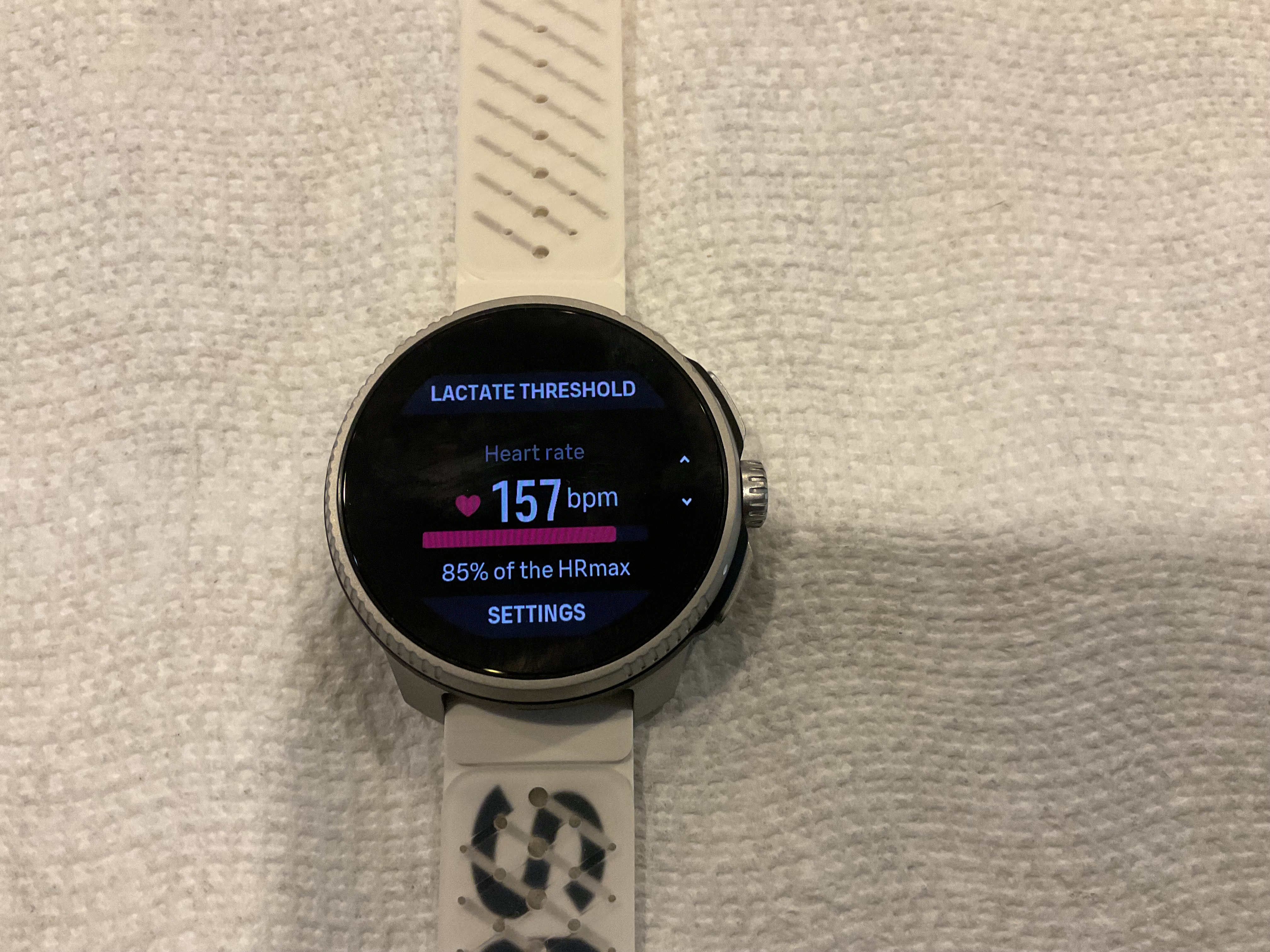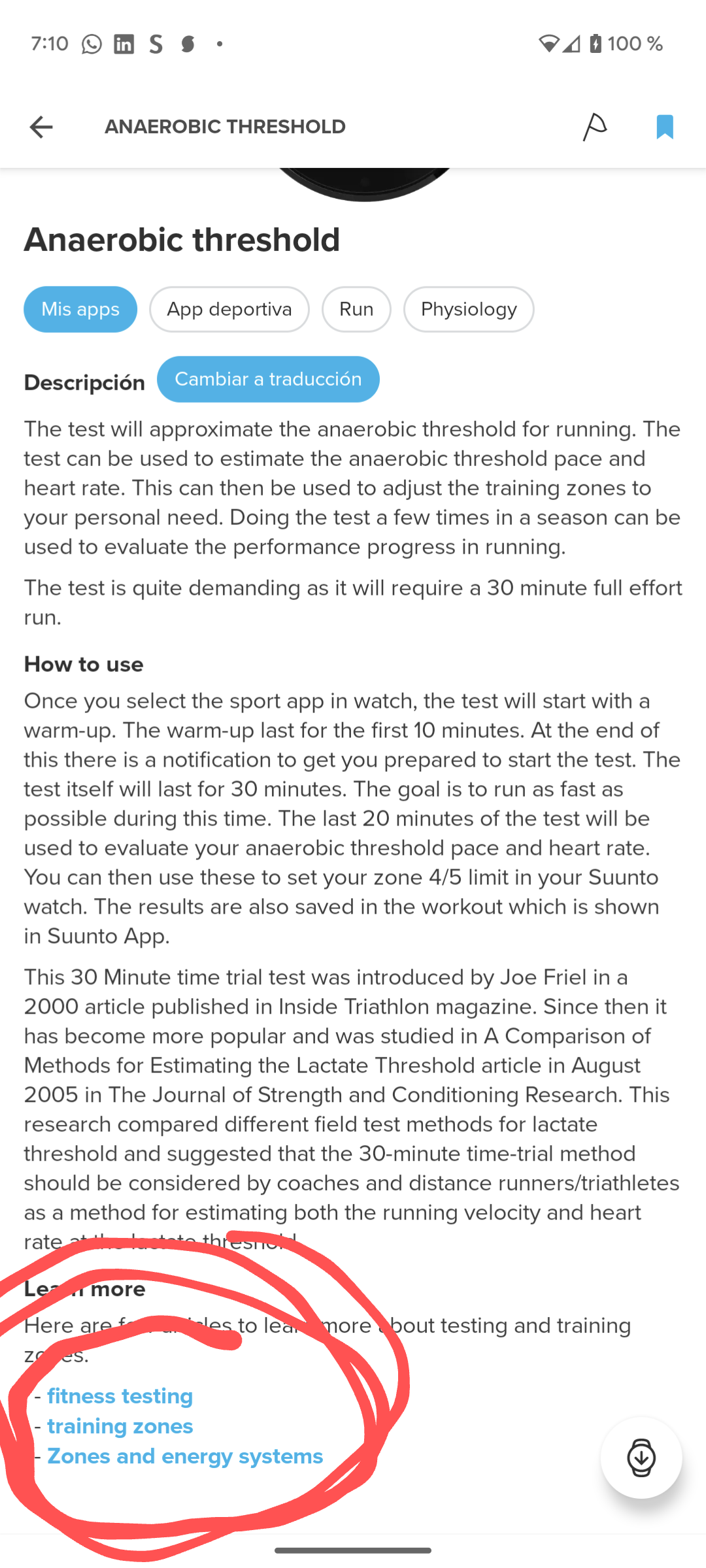Lactate threshold setting
-
@ChrisA I haven’t checked yet (SV still missing all the new fun things), but this is definitely something that should be thoroughly explained in the online documentation, especially now in the transition phase when the algorithms have been changed.
Now that I started I might as well speak my mind… Suunto documents could be improved a wee bit. Not all of us are professional, competing athletes or well informed about all the acronyms and their relations to HR zones and resulting fitness metrics. I am old but I can learn new concepts and I do like to read the docs. It’s just that I’d like to digest a simple explanation for everything, or wireframe model as we say in Finland. IMHO some of the current docs assume a bit too much. And some of the docs seem to be out of date (considering the recent discussions here in this forum). Just today I’ve seen field testers and moderators explaining things that should have been explained in the documentation in a way that any metrics hungry user can understand. Are the users skipping their manuals or are the docs missing something crucial?
-
@fluca yes, thats what I read at Suuntos website too, but if you let your Suunto watch define the HR Zones automatically (by entering your max HR) it sets the upper limit of Zone 4 to 86% max HR, while the Race states you LTH is 81% (see pics above), which is the lower limit of zone 4…?
And actually 149 bps as the upper limit of Zone 4 would result in a max HR of 173, which is too low for me (I did workouts with +173 bps for extended periods of time and also reached 185 HRs in workouts)
-
@BrunoH said in Lactate threshold setting:
@ChrisA
Now that I started I might as well speak my mind… Suunto documents could be improved a wee bit. Not all of us are professional, competing athletes or well informed about all the acronyms and their relations to HR zones and resulting fitness metrics. I am old but I can learn new concepts and I do like to read the docs. It’s just that I’d like to digest a simple explanation for everything, or wireframe model as we say in Finland. IMHO some of the current docs assume a bit too much. And some of the docs seem to be out of date (considering the recent discussions here in this forum). Just today I’ve seen field testers and moderators explaining things that should have been explained in the documentation in a way that any metrics hungry user can understand. Are the users skipping their manuals or are the docs missing something crucial?Totally agree with this. Without wishing to draw a lot of negative comments my way, this is one area which Garmin makes pretty simple. which (for non-professional athletes, like me) is very helpful.
-
@BrunoH said in Lactate threshold setting:
Are the users skipping their manuals or are the docs missing something crucial?
It’s actually not described in the Race manual 🤨. There’s just one short sentence, that the Race can determine your lactate threshold, but not how to interpret this data.
-
@ChrisA hey Chris, my max. Heart rate in automatical measurement (Age in watch) ist 181 BPM. And so my lactat Treshhold was 157 BPM. So o set the 157 at the end from zone 4. All good. BUT i have made Professional Spiroergeometrie and there my heart capacity have a maximal heart rate from 193 BPM.and a lactat Treshhold from 169 BPM. So i set the 193 maximal heart rate manually without update my zones and next i set my lactat Treshhold from 169 to end from zone 4. What i now did is the following setup: NOW i had my corrected maximal heart rate AND my Treshhold correct placed. What about my another heart rate zones automatic measurement from the watch? I set in every zone (Zone 1-4) the difference beats from the max heart rate in my Case 193-181 = 12 beats. So i changed all zones -12 beats and now i have so good measurement. (Zone 1-4 i take 12 beats away in every zone, corrected down). Hope this helps you!
-
@ChrisA said in Lactate threshold setting:
@fluca yes, thats what I read at Suuntos website too, but if you let your Suunto watch define the HR Zones automatically (by entering your max HR) it sets the upper limit of Zone 4 to 86% max HR, while the Race states you LTH is 81% (see pics above), which is the lower limit of zone 4…?
And actually 149 bps as the upper limit of Zone 4 would result in a max HR of 173, which is too low for me (I did workouts with +173 bps for extended periods of time and also reached 185 HRs in workouts)
You should know that if you now set your maximal heart rate higher (from your test 174–> 185) your next results are not so hard and not so much TSS because you can reach higher heart rate
-
@GiPFELKiND ah… I understand what you did… interesting approach.
Well, I don’t have too many problems with just letting Suunto set up my HR automatically by using 185 as a max HR. For me the zones feel quite right then, when running or doing some cardio workout (actually I really enjoy running by how I feel, without looking on individual HR numbers too much anymore and just glimpse at the colour of the zone from time to time)
I just wondered about this combination of 81% and lactate threshold. 81% can hardly be the upper limit of zone 4, can’t it?
-
I believe this widget is simply telling you what percentage of your Max Hr the Lactate Threshold was computed at. For example my Lactate Threshold is computed at 157 and shows it being 85% of max HR which corresponds to my set Max HR of 184. I don’t think the widget is telling you where to set that value which is traditionally the top of Zone 4.
I’ve only done two average runs with the watch so far. I feel for me 157 is a little low. I suspect a harder run and more runs will give me a more realistic Lactate Threshold that will closer match the Anaerobic Threshold test I did earlier in the year with the Suunto Plus app and with what Humango computes.
I’ve used the free tier of Training Peaks to set my zones but honestly there are over a dozen different methods with quite different zones. Zone 2 is also very important so I’d make sure what ever method you use they correspond to realistic values for you.

-
@ChrisA said in Lactate threshold setting:
@BrunoH said in Lactate threshold setting:
Are the users skipping their manuals or are the docs missing something crucial?
It’s actually not described in the Race manual 🤨. There’s just one short sentence, that the Race can determine your lactate threshold, but not how to interpret this data.
A good reading start is here:
https://www.suunto.com/sports/News-Articles-container-page/must-read-articles-that-guide-you-into-suuntos-world-of-training/ -
Have you test yourself?
I mean, there are some Suunto+Apps that can help you pushing your body to identify better the lactate threshold like:- Cooper test https://www.suunto.com/suuntoplusstore/sportsapp/zzcoop01
- Anaerobic threshold test https://www.suunto.com/suuntoplusstore/sportsapp/zzanae01
Then(as @Egika suggested) read the online articles in Suunto page. Each Suunto+App has connected articles

I hope this helps you
BR -
@suzzlo @Egika @deserthike20 thanks for all the good advice, it’s very appreciated
 I never did a professional lactate test, but with different Garmin, Coros and Huawei watches I got values for LTH around 155-160, which seemed alright too, and estimated my VO2 max between 39 and 42 (Suunto Race: 40.8). So Suuntos estimate of 149 is not too far away, but like @deserthike20 also stated a bit on the lower side.
I never did a professional lactate test, but with different Garmin, Coros and Huawei watches I got values for LTH around 155-160, which seemed alright too, and estimated my VO2 max between 39 and 42 (Suunto Race: 40.8). So Suuntos estimate of 149 is not too far away, but like @deserthike20 also stated a bit on the lower side.Thanks @deserthike20 for the picture of your LTH, showing 85%, I was puzzled, that it showed 81% for me, but that doesn’t seem to be a fixed value then. Thanks @Egika, I actually read most of the articles on Suunto‘s website and while they’re very interesting and I understand most of it
 , as a whole they’re also bit confusing. I will try one of S+ test like @suzzlo proposed, these days. Thanks guys!
, as a whole they’re also bit confusing. I will try one of S+ test like @suzzlo proposed, these days. Thanks guys! -
@ChrisA I were you I would repeat the test a couple of times more. The best would be making sure you wear a separate HR strap. Ask a friend if you do not want to buy one, it can make a lot of difference.
-
@ChrisA the definition of lactate threshold is unambiguous across articles, publications. In practice there a two kinds of metabolic thresholds, which can be determined by plotting lactate levels as the function of exercise intensity. The first is the intensity at which lactate levels start to rise above resting level. This is usually called aerobic threshold (which term is also not used consistently). The second threshold is above that, and is called anaerobic threshold, the definition of which varies across articles and studies. The key characteristic of this second threshold is that exercise at this intensity can be continued only to a limited amount of time (up to an hour or so AFAIR). This upper threshold is what should be treated as LT and to set the upper limit of Z4 in a 5-zone system. Your HR of 149 looks to me like the lower threshold, which is the upper limit of easy/moderate intensity.
I don’t know which threshold the algorithm int the watch is meant to determine. -
-
@halajos very good explained




 You wrote about the VT1 and VT2 Treshhold right?!
You wrote about the VT1 and VT2 Treshhold right?! -
@GiPFELKiND there are different terminologies, but they basically mean the same. Some refer to them as ventilatory thresholds (VT1, VT2), others as lactate thresholds (LT1, LT2). And MLSS (maximial lactate steady state) as well as critical power/speed are also used, which are different approaches to the upper threshold.
-
Hi! Is there any way to see lactate in the suunto app or just in the watch?
-
@Matija-S please don’t post the same question in different threads.
-
@isazi please LINK then here the other Post…
-
@Matija-S I didnt have this values since i have the Race … Not in watch! Do you have this!?



 .
.